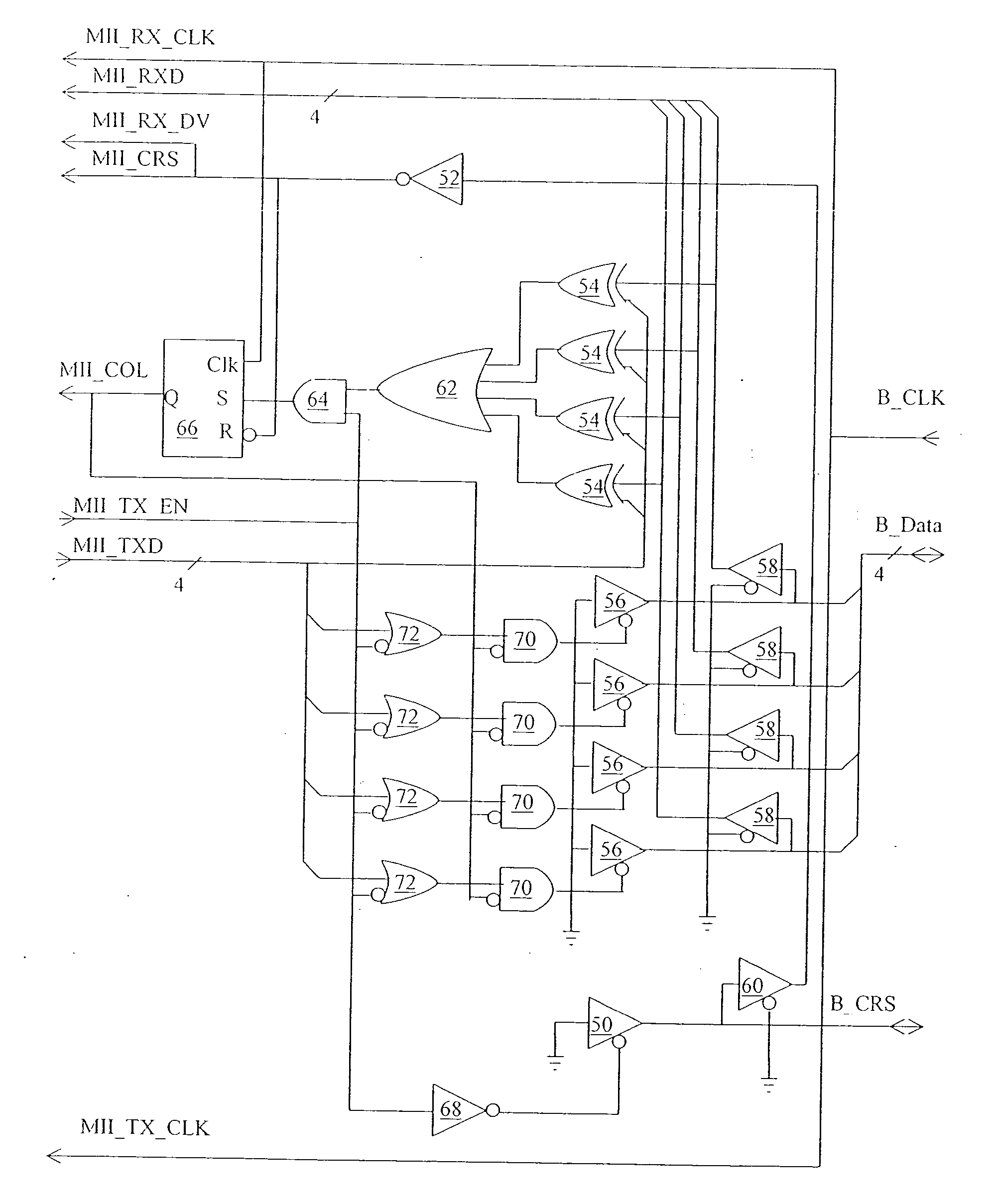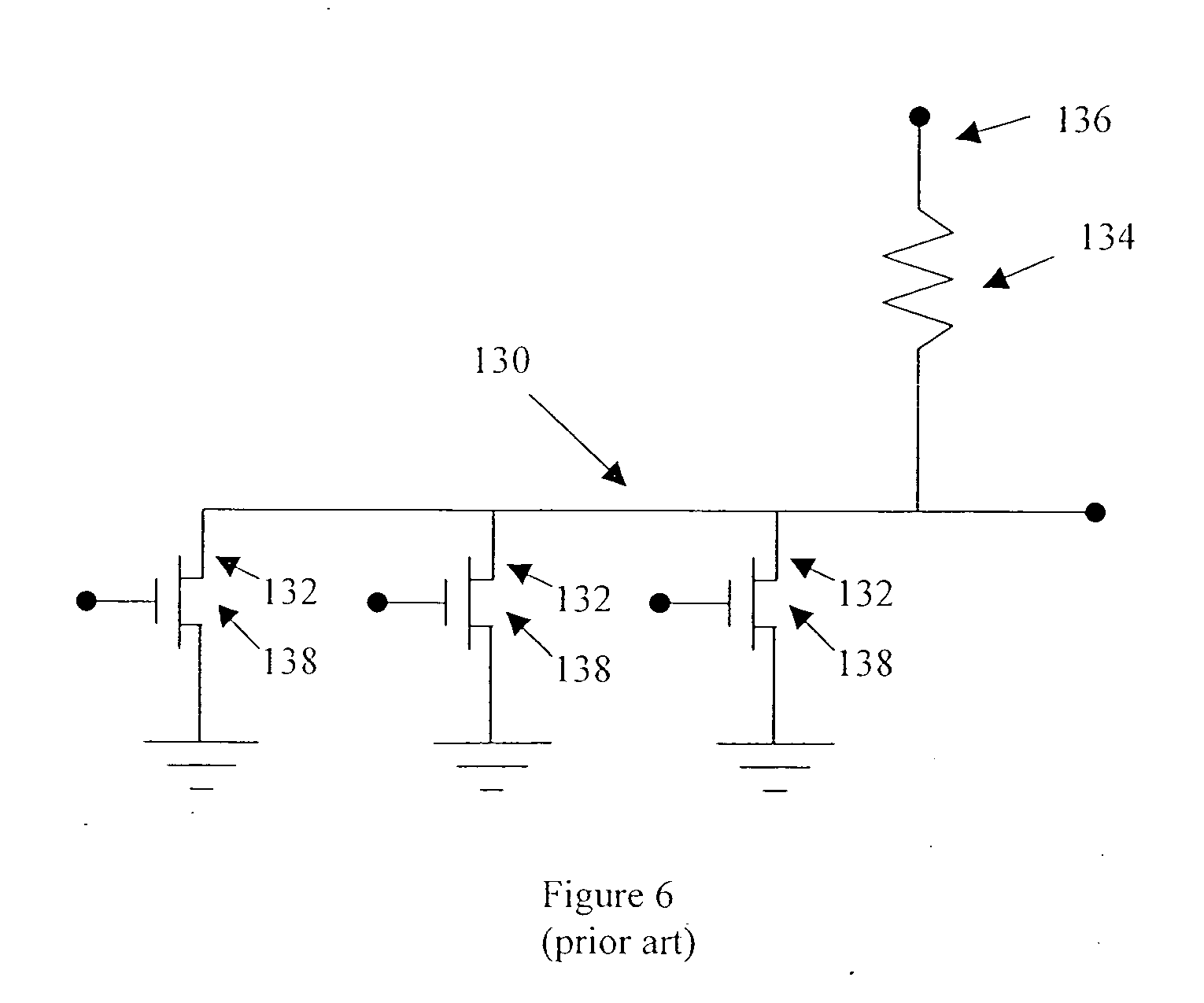Bus network interface
a network interface and bus technology, applied in the field of network interface systems, can solve the problems of troublesome connection of multiple devices via a bus, unimportant connection of more than one meter, etc., and achieve the effect of low cost, simple and robust network
- Summary
- Abstract
- Description
- Claims
- Application Information
AI Technical Summary
Benefits of technology
Problems solved by technology
Method used
Image
Examples
Embodiment Construction
[0071] The present invention is of a network interface system having a bus architecture, and more particularly a system that facilitates the transfer of data among a collection of devices via a common bus without the need for connecting each device via a separate set of lines to a central unit.
[0072] The discussion below, by way of example only, shows how the present invention ma)y be applied to the connection of devices having MII interfaces via a bus architecture having a four-line parallel data path. However, the principles discussed apply to devices with interfaces other than MII, and to data paths having any number of lines, including a data path consisting of a single line. All such applications are included in the scope of the present invention.
[0073] The principles and operation of a network interface according to the present invention may be better understood with reference to the drawings and the accompanying description.
[0074] Referring now to the drawings, FIG. 7 illu...
PUM
 Login to View More
Login to View More Abstract
Description
Claims
Application Information
 Login to View More
Login to View More - R&D
- Intellectual Property
- Life Sciences
- Materials
- Tech Scout
- Unparalleled Data Quality
- Higher Quality Content
- 60% Fewer Hallucinations
Browse by: Latest US Patents, China's latest patents, Technical Efficacy Thesaurus, Application Domain, Technology Topic, Popular Technical Reports.
© 2025 PatSnap. All rights reserved.Legal|Privacy policy|Modern Slavery Act Transparency Statement|Sitemap|About US| Contact US: help@patsnap.com



